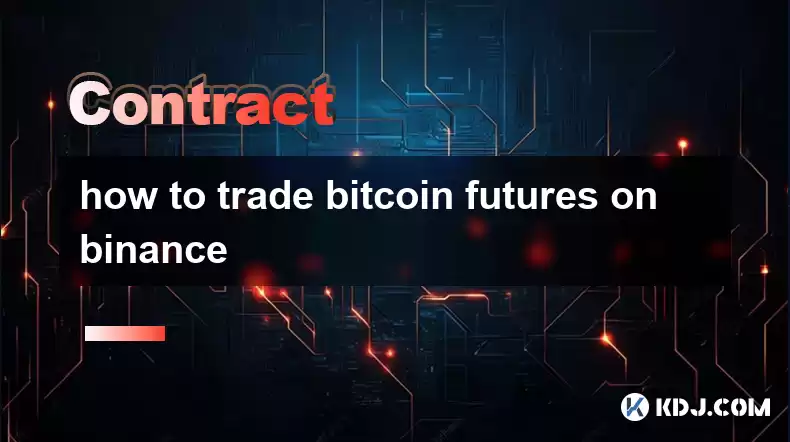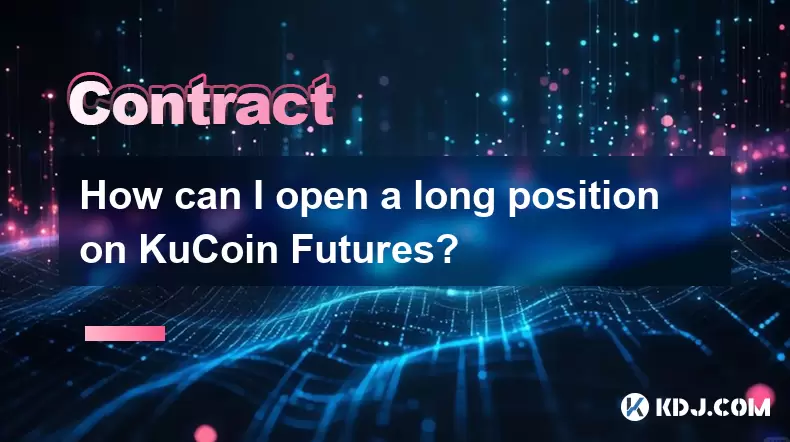-
 Bitcoin
Bitcoin $116700
0.24% -
 Ethereum
Ethereum $3973
4.34% -
 XRP
XRP $3.283
7.68% -
 Tether USDt
Tether USDt $1.000
0.01% -
 BNB
BNB $789.8
2.27% -
 Solana
Solana $176.2
3.31% -
 USDC
USDC $0.9999
0.00% -
 Dogecoin
Dogecoin $0.2238
5.14% -
 TRON
TRON $0.3389
-0.51% -
 Cardano
Cardano $0.7907
4.03% -
 Stellar
Stellar $0.4527
10.02% -
 Hyperliquid
Hyperliquid $41.07
4.27% -
 Sui
Sui $3.794
1.77% -
 Chainlink
Chainlink $19.49
10.40% -
 Bitcoin Cash
Bitcoin Cash $580.9
0.74% -
 Hedera
Hedera $0.2617
4.32% -
 Avalanche
Avalanche $23.41
3.67% -
 Ethena USDe
Ethena USDe $1.001
-0.03% -
 Litecoin
Litecoin $122.4
1.38% -
 Toncoin
Toncoin $3.364
1.49% -
 UNUS SED LEO
UNUS SED LEO $8.988
0.37% -
 Shiba Inu
Shiba Inu $0.00001295
2.82% -
 Uniswap
Uniswap $10.62
5.75% -
 Polkadot
Polkadot $3.922
4.46% -
 Dai
Dai $1.000
0.01% -
 Bitget Token
Bitget Token $4.494
2.15% -
 Monero
Monero $268.0
-1.30% -
 Cronos
Cronos $0.1523
3.68% -
 Pepe
Pepe $0.00001127
4.43% -
 Aave
Aave $285.4
4.85%
how to trade bitcoin futures on binance
Binance's Bitcoin futures platform lets users speculate on Bitcoin's price using leveraged contracts, but it's crucial to understand risk management, including stop-loss orders and avoiding over-leveraging, before trading.
Mar 26, 2025 at 05:29 am

How to Trade Bitcoin Futures on Binance
Binance offers a robust platform for trading Bitcoin futures contracts, allowing traders to speculate on the future price of Bitcoin without directly owning the underlying asset. This guide details the process, covering account setup, contract specifics, and risk management. Understanding these aspects is crucial before engaging in futures trading, a complex and potentially high-risk activity.
Understanding Binance Bitcoin Futures
Binance's Bitcoin futures contracts are derivative instruments. They represent an agreement to buy or sell Bitcoin at a predetermined price on a specific date in the future. These contracts are leveraged, meaning you can control a larger position with a smaller amount of capital. However, leverage magnifies both profits and losses. Different contract types exist, offering varying expiration dates and settlement methods. Familiarize yourself with the contract specifications before initiating a trade.
Setting up Your Binance Futures Account
Before trading Bitcoin futures, you need a Binance account. If you already have a spot trading account, you'll need to enable futures trading.
- Navigate to the Binance website and log in.
- Find the "Futures" section. It's usually prominently displayed in the navigation menu.
- Click on "Futures" and follow the on-screen instructions to enable futures trading. You may need to complete a short knowledge test to demonstrate understanding of the risks involved.
- Fund your futures wallet with the required margin currency, typically USDT or BUSD. This is the collateral securing your position.
Understanding Margin and Leverage
Leverage amplifies your trading power, allowing you to control larger positions with less capital. However, it also increases risk. If the market moves against you, your losses can exceed your initial margin. Binance allows you to adjust your leverage level for each trade, but choose wisely. Higher leverage equates to higher risk. Understanding your risk tolerance is paramount.
- Your margin is the collateral you deposit to secure your position.
- Leverage is the multiplier applied to your margin. A 10x leverage means you control a position ten times the size of your margin.
- Liquidation occurs when your losses deplete your margin below the required maintenance margin. This automatically closes your position.
Placing a Bitcoin Futures Trade
Once your account is funded and you understand the risks, you can place your trade.
- Navigate to the Bitcoin futures trading interface on Binance.
- Choose between a long (buy) or short (sell) position based on your price prediction. A long position profits if the price rises, while a short position profits if the price falls.
- Specify the contract size and leverage. Start with smaller positions and lower leverage until you gain experience.
- Set your entry price, take-profit order (to lock in profits), and stop-loss order (to limit potential losses). These are crucial for risk management.
- Click "Buy" or "Sell" to execute your trade.
Managing Risk in Bitcoin Futures Trading
Risk management is crucial in futures trading. Never risk more capital than you can afford to lose.
- Use stop-loss orders to automatically close your position if the price moves against you by a predetermined amount.
- Avoid over-leveraging. Start with lower leverage and gradually increase it as your experience and confidence grow.
- Diversify your positions across multiple assets to reduce overall risk.
- Regularly review your trading strategy and adjust as needed. Markets are dynamic, and your strategy should adapt accordingly.
- Paper trading or using a demo account can help you practice before risking real funds.
Understanding Order Types
Binance offers various order types to help you execute your trades effectively.
- Limit Orders: These allow you to buy or sell at a specific price or better.
- Market Orders: These execute immediately at the best available price. They are generally less favorable in terms of price but guarantee immediate execution.
- Stop-Loss Orders: These automatically close your position when the price reaches a specified level.
- Take-Profit Orders: These automatically close your position when the price reaches a specified level. These help lock in profits.
Closing Your Bitcoin Futures Position
To close your position, you need to execute an opposite trade.
- If you have a long position (bought), you need to sell the same contract size.
- If you have a short position (sold), you need to buy the same contract size.
- Closing your position realizes your profit or loss.
Frequently Asked Questions
Q: What are the fees for trading Bitcoin futures on Binance? Binance charges maker and taker fees, which vary based on your trading volume and BNB holdings. Check Binance's fee schedule for the most up-to-date information.
Q: What is liquidation in Bitcoin futures trading? Liquidation occurs when your losses deplete your margin below the required maintenance margin, automatically closing your position to prevent further losses.
Q: How can I minimize my risk when trading Bitcoin futures? Use stop-loss orders, avoid over-leveraging, diversify your portfolio, and practice risk management techniques. Start with smaller positions and gradually increase your exposure as you gain experience.
Q: What is the difference between a long and short position? A long position profits if the price rises, while a short position profits if the price falls.
Q: Where can I find more information about Binance Bitcoin futures? Consult Binance's official website and help center for comprehensive information and tutorials. They also offer educational resources for beginners.
Q: Are there any risks associated with Bitcoin futures trading? Yes, Bitcoin futures trading involves significant risk, including the potential for substantial losses. The leveraged nature of futures contracts amplifies both profits and losses. It's crucial to understand these risks before trading.
Disclaimer:info@kdj.com
The information provided is not trading advice. kdj.com does not assume any responsibility for any investments made based on the information provided in this article. Cryptocurrencies are highly volatile and it is highly recommended that you invest with caution after thorough research!
If you believe that the content used on this website infringes your copyright, please contact us immediately (info@kdj.com) and we will delete it promptly.
- Coinbase, Cosmos, and dYdX: Navigating the Crypto Currents
- 2025-08-09 06:30:16
- BNB Price, Altcoins, and Predictions: What's the Buzz?
- 2025-08-09 06:30:16
- Crypto Presale Projects Primed for Gains in 2025: A New Yorker's Take
- 2025-08-09 06:50:15
- Ruvi AI: The Millionaire Maker Poised for a Price Spike?
- 2025-08-09 06:50:15
- Cold Wallet, CoinMarketCap, Cardano & XRP: Navigating Crypto's Next Big Wave
- 2025-08-09 07:10:15
- Hedera (HBAR) Price Surge: Market Cap Soars, What's Next?
- 2025-08-09 07:10:15
Related knowledge

What is the difference between realized and unrealized PNL on KuCoin?
Aug 09,2025 at 01:49am
Understanding Realized and Unrealized PNL on KuCoinWhen trading on KuCoin, especially in futures and perpetual contracts, understanding the distinctio...

How does KuCoin Futures compare against Binance Futures in terms of features?
Aug 09,2025 at 03:22am
Trading Interface and User ExperienceThe trading interface is a critical component when comparing KuCoin Futures and Binance Futures, as it directly i...

What is the distinction between mark price and last price on KuCoin?
Aug 08,2025 at 01:58pm
Understanding the Basics of Price in Cryptocurrency TradingIn cryptocurrency exchanges like KuCoin, two key price indicators frequently appear on trad...

What are the specific maker and taker fees on KuCoin Futures?
Aug 08,2025 at 08:28am
Understanding Maker and Taker Fees on KuCoin FuturesWhen trading on KuCoin Futures, users encounter two primary types of fees: maker fees and taker fe...

Can you explain the difference between cross margin and isolated margin on KuCoin?
Aug 09,2025 at 02:57am
Understanding Margin Trading on KuCoinMargin trading on KuCoin allows traders to borrow funds to increase their trading position beyond their actual c...

How can I open a long position on KuCoin Futures?
Aug 09,2025 at 02:07am
Understanding KuCoin Futures and Long PositionsOpening a long position on KuCoin Futures means you are speculating that the price of a cryptocurrency ...

What is the difference between realized and unrealized PNL on KuCoin?
Aug 09,2025 at 01:49am
Understanding Realized and Unrealized PNL on KuCoinWhen trading on KuCoin, especially in futures and perpetual contracts, understanding the distinctio...

How does KuCoin Futures compare against Binance Futures in terms of features?
Aug 09,2025 at 03:22am
Trading Interface and User ExperienceThe trading interface is a critical component when comparing KuCoin Futures and Binance Futures, as it directly i...

What is the distinction between mark price and last price on KuCoin?
Aug 08,2025 at 01:58pm
Understanding the Basics of Price in Cryptocurrency TradingIn cryptocurrency exchanges like KuCoin, two key price indicators frequently appear on trad...

What are the specific maker and taker fees on KuCoin Futures?
Aug 08,2025 at 08:28am
Understanding Maker and Taker Fees on KuCoin FuturesWhen trading on KuCoin Futures, users encounter two primary types of fees: maker fees and taker fe...

Can you explain the difference between cross margin and isolated margin on KuCoin?
Aug 09,2025 at 02:57am
Understanding Margin Trading on KuCoinMargin trading on KuCoin allows traders to borrow funds to increase their trading position beyond their actual c...

How can I open a long position on KuCoin Futures?
Aug 09,2025 at 02:07am
Understanding KuCoin Futures and Long PositionsOpening a long position on KuCoin Futures means you are speculating that the price of a cryptocurrency ...
See all articles

























































































